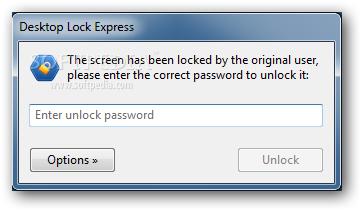
Kube-controller-manager-docker-desktop 1/1 Running 1 20h Kube-apiserver-docker-desktop 1/1 Running 1 20h For example kubectl get pods -n kube-system shows you some of the pods that are part of the Kubernetes system: > kubectl get pods -n kube-systemĬoredns-f9fd979d6-5f794 1/1 Running 1 20hĬoredns-f9fd979d6-gmpf9 1/1 Running 1 20h From the command line, you can run kubectl commands. You can now start deploying Kubernetes resources to your cluster. Once that turns green, you have Kubernetes up and running! Click Cancel to exit the settings. In the bottom left of the screen you can see the little Kubernetes symbol has appeared, but it's orange to indicating it's still starting up.
#Desktop lock express install
Click Install to continue.ĭocker Desktop pulls all the required images in the background, and starts setting up your cluster. Navigate to the Kubernetes tab, and check Enable Kubernetes:Ĭlick Apply & Restart, and you'll get a popup advising you that you need an internet connection.

#Desktop lock express code
That said, if you're deploying to production on Kubernetes then there's considerable value to being able to run and test your code in a similar environment locally. NET space, then Project Tye is another great option which should give a simpler onboarding than Kubernetes. Even if you find you start needing to orchestrate containers locally, I'd recommend Docker Compose as a simpler alternative to Kubernetes. You don't need Kubernetes to benefit from that. In my experience, the biggest wins from Docker come from the isolation it gives you from your host system. Kubernetes has become the defacto container orchestrator for production workloads, but that doesn't mean you necessarily need it. Your first question before going down this route should be "do I need Kubernetes?".
#Desktop lock express how to
In this post I show how to enable Kubernetes support, and how to deploy the Kubernetes Dashboard to give your local Kubernetes cluster a friendly GUI. In my previous post, I showed how you can install Docker Desktop for Windows using WSL 2.


 0 kommentar(er)
0 kommentar(er)
